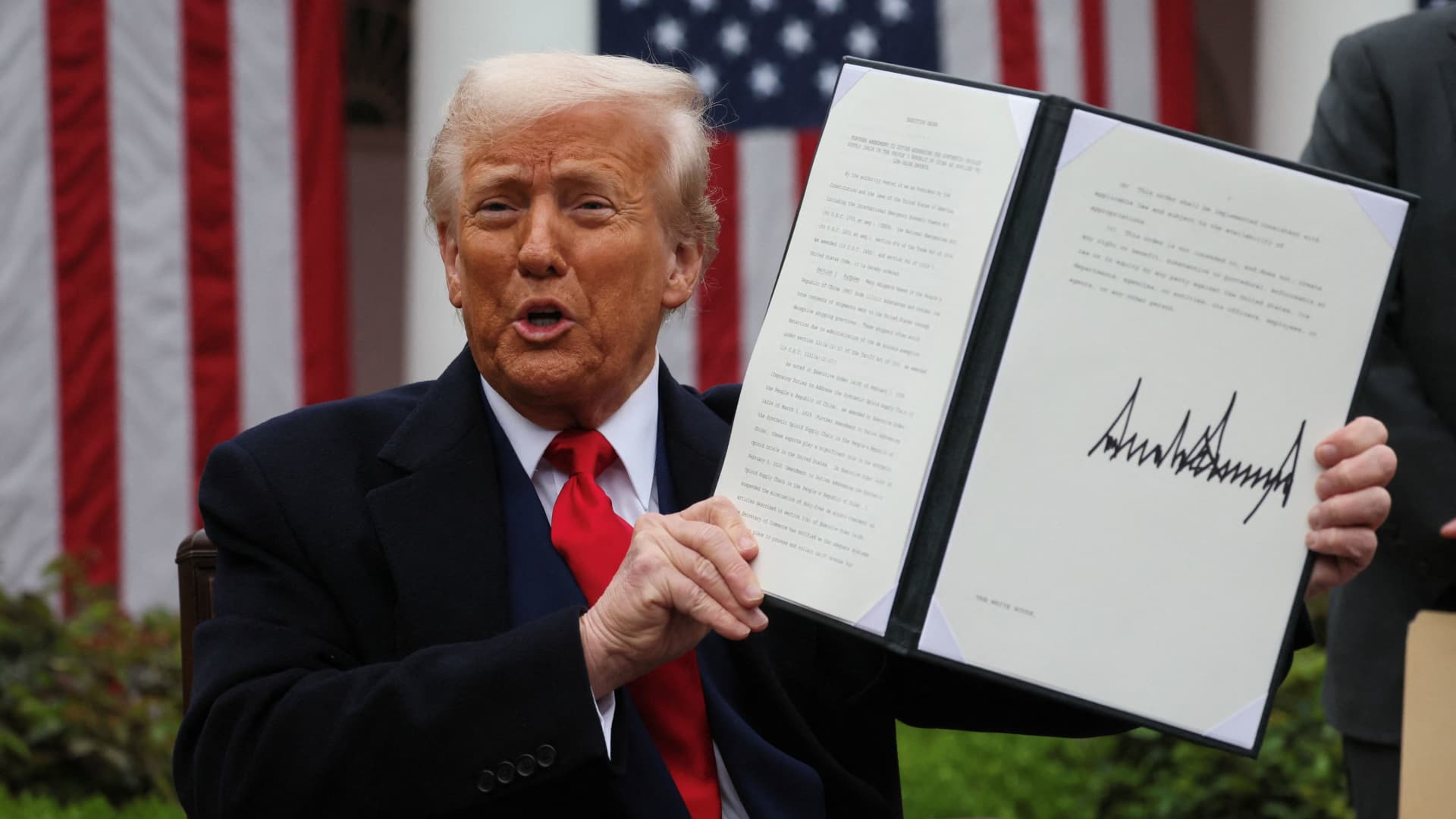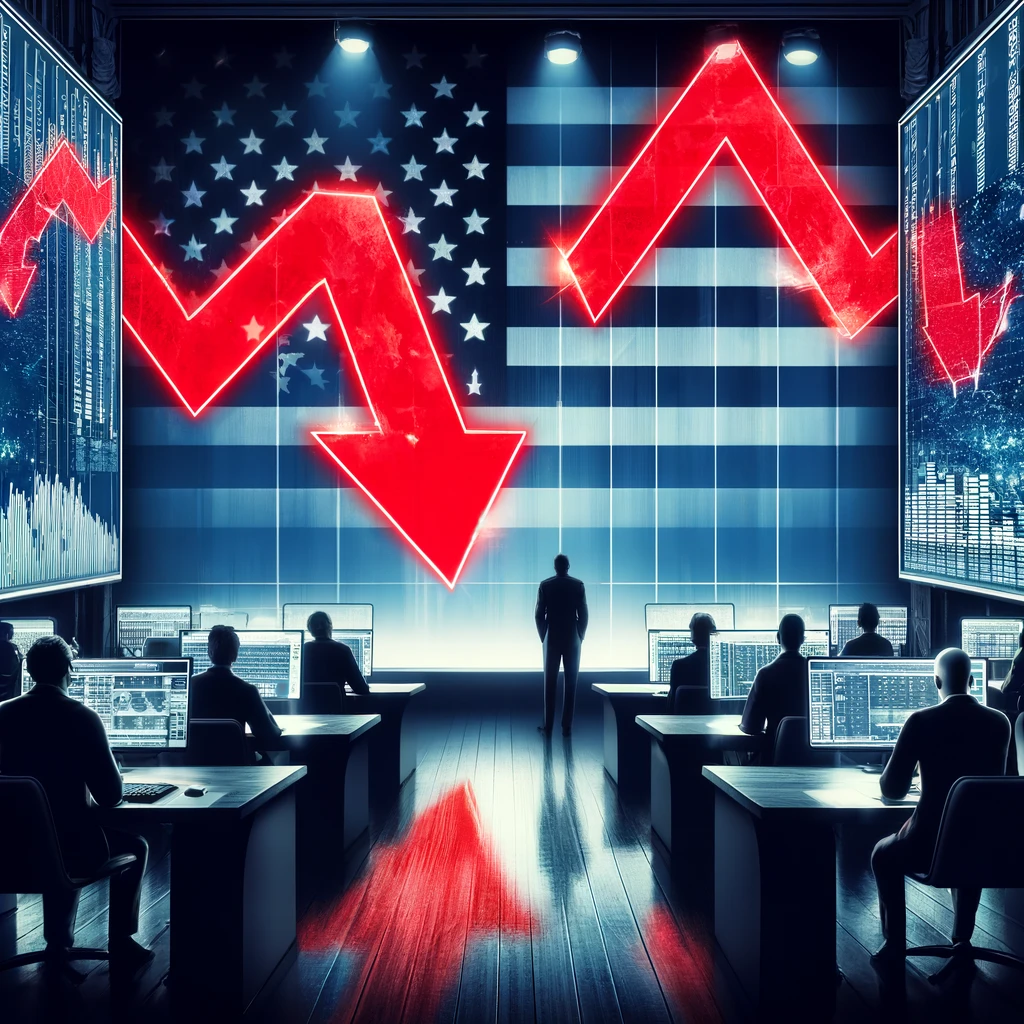Trump Escalates Trade War – Imposes Massive New Tariffs on Imports

Former U.S. President Donald Trump has significantly escalated the global trade war by introducing sweeping new tariffs on imported goods. The announcement, made on April 2, 2025, includes a universal 10% tariff on all imports, set to take effect on April 5.
In addition to this blanket tariff, the administration is imposing higher, “reciprocal” tariffs on approximately 60 countries starting April 9. These nations are accused of maintaining high tariffs on U.S. goods, using non-tariff trade barriers, or undermining American economic interests.
Which Countries Face the Highest Tariffs?
China Faces the Harshest Increase – Tariffs Rise to 54%
Among the hardest-hit countries is China, which will see an additional 34% tariff added to the existing 20%, bringing the total tariff rate to 54%.
From May 2, this 54% tariff will also apply to Chinese and Hong Kong-based online retailers like AliExpress, Temu, and Shein, affecting small-package shipments under $800. This move directly targets the booming cross-border e-commerce sector.
Other Countries Facing Increased Tariffs
Several other nations will also face significant tariff hikes:
- Vietnam – 46%
- Cambodia – 49%
- Thailand – 36%
- Japan – 24%
- South Africa – 30%
- Taiwan – 32%
- Norway – 15%
- India – 26%
- Lesotho – 50%
Exemptions and Special Cases
- Canada and Mexico are temporarily exempt due to the USMCA trade agreement. However, existing tariffs on certain goods from these nations will remain.
- Steel and aluminum will not face additional country-specific tariffs, except for China, where extra duties will apply.
- Automobiles are now subject to a 25% tariff on all foreign-made vehicles, which took effect immediately after the announcement.
- Some critical industries, such as pharmaceuticals, semiconductors, and copper, remain exempt for now, though future tariffs have not been ruled out.
Trump’s Justification – “Economic Independence” and Protectionism
Trump has framed these tariffs as a necessary step to counter unfair trade practices, protect American jobs, and boost domestic manufacturing. He declared the new policy as a “Declaration of Economic Independence”, calling April 5 the “Liberation Day” for U.S. industry.
According to Trump, these tariffs are only half of what other countries impose on the U.S. when considering currency manipulation and hidden trade barriers. His administration argues that these new measures will reduce trade deficits, encourage local production, and strengthen the U.S. economy.
Economic and Global Backlash – Risks of Recession and Stagflation
Despite the administration’s claims, many economists and trade experts warn of severe consequences. History shows that tariffs are paid by importers, meaning higher prices for American consumers. Some analysts predict this policy could lead to:
- A sharp increase in inflation, as imported goods become more expensive.
- Supply chain disruptions, especially for industries reliant on foreign components.
- A possible recession, as trade barriers slow economic growth.
Some have compared these tariffs to the Smoot-Hawley Tariff Act of 1930, which deepened the Great Depression. Critics argue that such extreme protectionism risks global economic instability and could backfire on U.S. businesses that depend on exports.
International Reactions – Retaliation on the Horizon?
China and the EU Promise Strong Countermeasures
China has responded with harsh criticism, calling the tariffs “reckless” and promising “resolute countermeasures.” Beijing is reportedly preparing its own punitive tariffs on U.S. agricultural products, semiconductors, and tech imports.
The European Union (EU) has also condemned the move and is considering retaliatory tariffs on key U.S. exports, including automobiles and whiskey.
Even the United Kingdom, which faces a lower 10% tariff, has warned that this policy could trigger a major global trade dispute.
Some Nations Hesitate to Retaliate
A few nations, including Australia and Malaysia, have stated that they are not considering immediate countermeasures but are monitoring the situation closely.
Market Turmoil – Stock Markets React Negatively
The announcement has shaken global financial markets, with:
- Stock market futures plunging following the news.
- Asian markets opening lower, reflecting fears of a trade war.
- U.S. retailers and multinational corporations seeing sharp stock declines, especially those dependent on imports.
Political Reactions – Divided Opinions in the U.S.
Some Republican Lawmakers Oppose the Tariffs
While some American manufacturing workers and industries support Trump’s move, there is growing bipartisan opposition in Congress.
- Republican senators have joined Democrats in opposing the tariffs, with some even proposing legislation to reverse parts of the policy.
- Iowa’s governor has warned that the tariffs could hurt American farmers, particularly those reliant on exports to China and Europe.
- U.S. Treasury Secretary Scott Bessent has urged other countries not to retaliate, warning that a full-scale trade war would have serious economic consequences.
Conclusion – A Risky Trade War with Uncertain Outcomes
Trump’s new sweeping tariffs mark a major escalation in global trade tensions. While the administration argues that the measures will protect American industry, critics warn of higher consumer prices, economic slowdown, and potential retaliation from key trading partners.
As the world watches closely, the coming weeks will determine:
- How effectively these tariffs will be implemented.
- How other nations will respond.
- Whether this policy will boost the U.S. economy—or trigger a trade war that backfires.
FAQs
1. What is the purpose of Trump’s new tariffs?
Trump argues that the tariffs are meant to protect American jobs, reduce trade deficits, and encourage domestic manufacturing by making imported goods more expensive.
2. How will these tariffs affect U.S. consumers?
Consumers will likely see higher prices on imported goods, especially from China, as businesses pass on increased costs to buyers.
3. Will there be retaliation from other countries?
Yes, countries like China and the EU have already signaled that they will impose counter-tariffs on U.S. goods.
4. What industries will be most affected?
The retail, automotive, and technology sectors are expected to suffer the most due to increased costs and supply chain disruptions.
5. Can Congress stop these tariffs?
While some lawmakers are opposing the tariffs, Trump has broad executive power over trade policies, making it difficult to reverse them without a major political battle.



